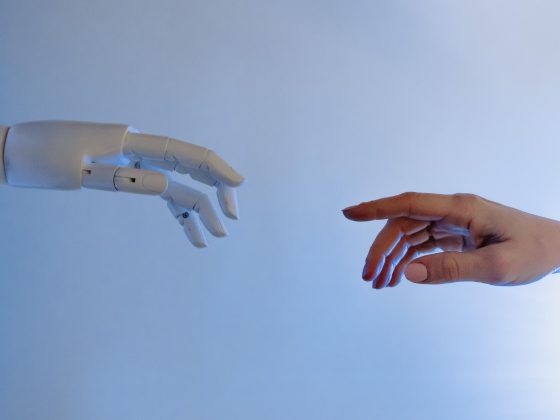Build a better mousetrap
We don’t usually think of a mousetrap as a computer, but believe it or not, it does share some similarities with the CPU running the device you’re reading this article on. The classic (non-cat) mousetrap has two states: it’s either set or released. You might consider that on (the kill bar is set and stores potential energy) and off (the kill bar has been triggered.) In a sense, a mousetrap is a computer that calculates the presence of a mouse. You might imagine this code, in an imaginary language, describing the process:
if mousetrap == 0 then
There's a mouse!
else
There's no mouse yet.
endIn other words, you can derive mouse data based on the state of a mousetrap. The mousetrap isn’t foolproof, of course. There could be a mouse next to the mousetrap, and the mousetrap would still be registered as on because the mouse has not yet triggered the trap. So the program could use a few enhancements, but that’s pretty typical.
From our partners:
Switches
A mousetrap is ultimately a switch. You probably use a switch to turn on the lights in your house. A lot of information is stored in these mechanisms. For instance, people often assume that you’re at home when the lights are on.
You could program actions based on the activity of lights on in your neighborhood. If all lights are out, then turn down your loud music because people have probably gone to bed.
A CPU uses the same logic, multiplied by several orders of measure, and shrunken to a microscopic level. When a CPU receives an electrical signal at a specific register, then some other register can be tripped, and then another, and so on. If those registers are made to be meaningful, then there’s communication happening. Maybe a chip somewhere on the same motherboard becomes active, or an LED lights up, or a pixel on a screen changes color.
What comes around goes around. If you really want to detect a rodent in more places than the one spot you happen to have a mousetrap set, you could program an application to do just that. With a webcam and some rudimentary image recognition software, you could establish a baseline of what an empty kitchen looks like and then scan for changes. When a mouse enters the kitchen, there’s a shift in the pixel values where there was previously no mouse. Log the data, or better yet trigger a drone that focuses in on the mouse, captures it, and moves it outside. You’ve built a better mousetrap through the magic of on and off signals.
Compilers
A code compiler translates human-readable code into a machine language that speaks directly to the CPU. It’s a complex process because CPUs are legitimately complex (even more complex than a mousetrap), but also because the process is more flexible than it strictly “needs” to be. Not all compilers are flexible. There are some compilers that have exactly one target, and they only accept code files in a specific layout, and so the process is relatively straight-forward.
Luckily, modern general-purpose compilers aren’t simple. They allow you to write code in a variety of languages, and they let you link libraries in different ways, and they can target several different architectures. The GNU C Compiler (GCC) has over 50 lines of options in its --help output, and the LLVM clang compiler has over 1000 lines in its --help output. The GCC manual contains over 100,000 words.
You have lots of options when you compile code.
Of course, most people don’t need to know all the possible options. There are sections in the GCC man page I’ve never read, because they’re for Objective-C or Fortran or chip architectures I’ve never even heard of. But I value the ability to compile code for several different architectures, for 64-bit and 32-bit, and to run open source software on computers the rest of the industry has left behind.
The compilation lifecycle
Just as importantly, there’s real power to understanding the different stages of compiling code. Here’s the lifecycle of a simple C program:
- C source with macros (
<strong>.c</strong>) is preprocessed withcppto render an.ifile. - C source code with expanded macros (
<strong>.i</strong>) is translated withgccto render an.sfile. - A text file in Assembly language (
<strong>.s</strong>) is assembled withasinto an.ofile. - Binary object code with instructions for the CPU, and with offsets not tied to memory areas relative to other object files and libraries (
*.o) is linked withldto produce an executable. - The final binary file either has all required objects within it, or it’s set to load linked dynamic libraries (
*.sofiles).
And here’s a simple demonstration you can try (with some adjustment for library paths):
#include
int main(void)
{ printf(“hello world\n“);
return 0; }
EOF
$ cpp hello.c > hello.i
$ gcc -S hello.i
$ as -o hello.o hello.s
$ ld -static -o hello \
-L/usr/lib64/gcc/x86_64-slackware-linux/5.5.0/ \
/usr/lib64/crt1.o /usr/lib64/crti.o hello.o \
/usr/lib64/crtn.o –start-group -lc -lgcc \
-lgcc_eh –end-group
$ ./hello
hello world
Attainable knowledge
Computers have become amazingly powerful, and pleasantly user-friendly. Don’t let that fool you into believing either of the two possible extremes: computers aren’t as simple as mousetraps and light switches, but they also aren’t beyond comprehension. You can learn about compiling code, about how to link, and compile for a different architecture. Once you know that, you can debug your code better. You can understand the code you download. You may even fix a bug or two. Or, in theory, you could build a better mousetrap. Or a CPU out of mousetraps. It’s up to you.
Source: Opensource
For enquiries, product placements, sponsorships, and collaborations, connect with us at [email protected]. We'd love to hear from you!
Our humans need coffee too! Your support is highly appreciated, thank you!








